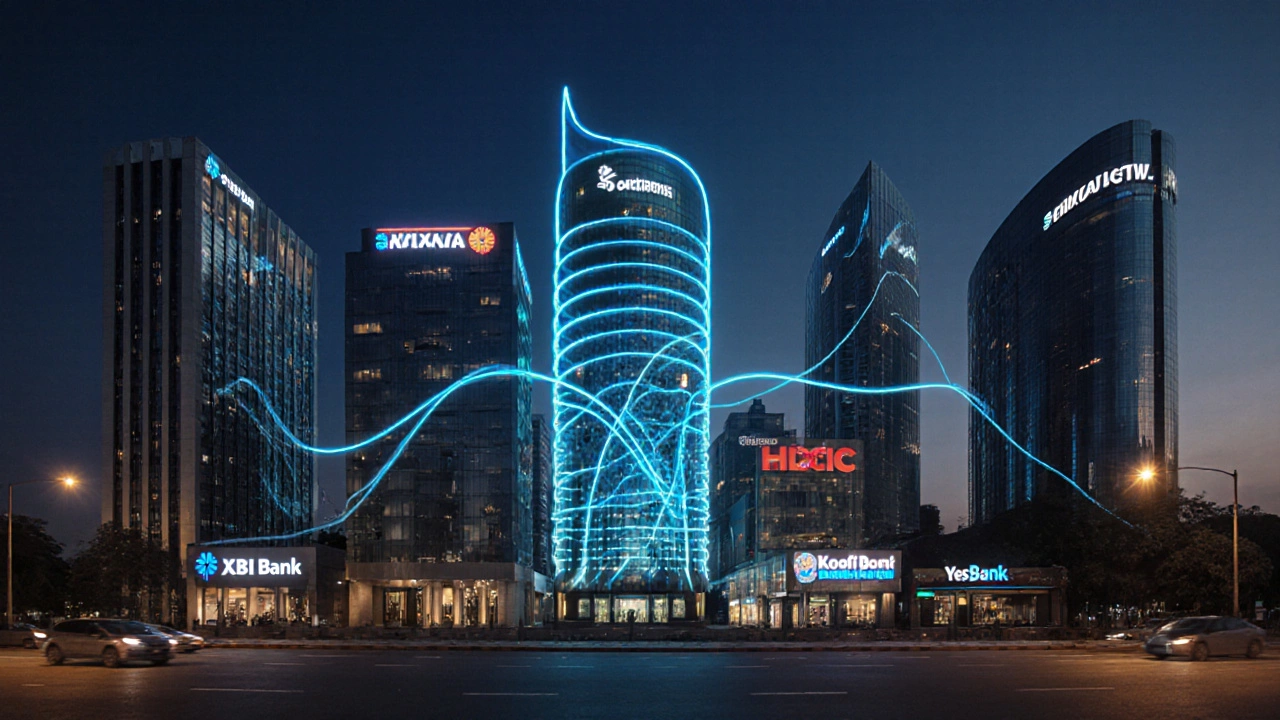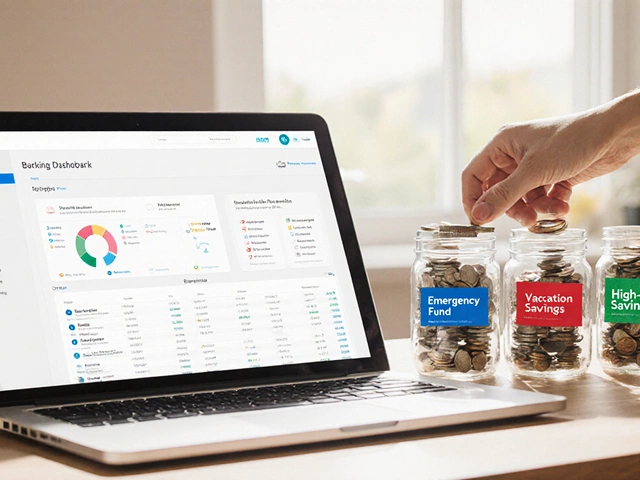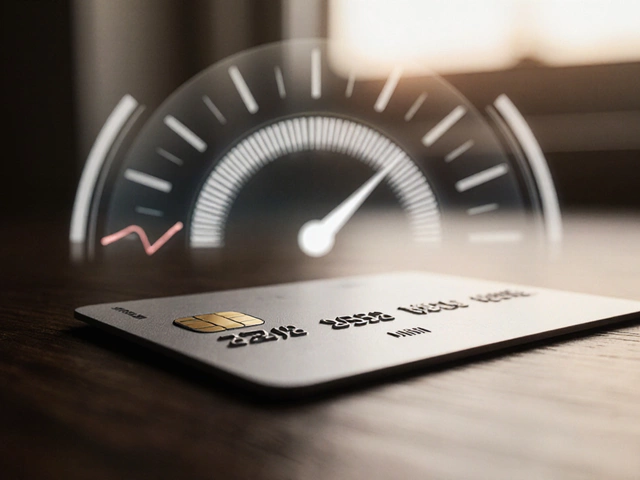
When you hear the question ‘Which banks have exposure to Adani?’, you’re really asking which lenders hold loans, bonds, or other credit tied to Adani Group, a diversified Indian conglomerate that runs ports, power plants, and mining operations across the sub‑continent. The answer matters because a shake‑up at the group can ripple through a bank’s balance sheet, affect its stock price, and even influence the safety of depositors’ money.
What does “exposure” actually mean?
In banking jargon, exposure is the amount of credit risk a lender carries from a borrower. It can appear as a direct loan, a bond holding, a syndicated facility, or a contingent commitment. In India, banks must disclose large exposures in their quarterly statements under the Reserve Bank of India’s (RBI) Large Exposures Framework.
So when we talk about a bank’s exposure to Adani, we’re adding up every loan, overdraft, bond purchase, and any off‑balance‑sheet guarantee that links back to any entity within the Adani Group.
Key Indian banks that have publicly reported Adani exposure
Below is a snapshot of the main lenders that have either disclosed or been identified by analysts as holding material credit to the group. Figures are rounded to the nearest INRbillion and are based on the latest RBI filings (Q32025) and audited annual reports.
- Axis Bank: The biggest single‑lender exposure, primarily through a syndicated loan to Adani Ports and SEZ Ltd. Reported exposure ≈₹45bn.
- State Bank of India (SBI): Holds a mix of term loans to Adani Power and short‑term working capital facilities. Reported exposure ≈₹32bn.
- HDFC Bank: Exposes through corporate finance deals for Adani Green Energy and a bond purchase in 2022. Reported exposure ≈₹27bn.
- ICICI Bank: Provides revolving credit facilities for Adani Transmission and holds a few secured bonds. Reported exposure ≈₹24bn.
- Kotak Mahindra Bank: Smaller but notable exposure via a loan to Adani Enterprises. Reported exposure ≈₹15bn.
- Yes Bank: After its 2023 restructuring, Yes Bank retained a limited exposure to Adani Renewable Energy. Reported exposure ≈₹8bn.
How banks calculate and report the exposure
The RBI’s Large Exposures Framework caps any single borrower’s exposure at 25% of a bank’s capital base. For conglomerates like Adani, the regulator treats the whole group as one borrower if the entities are financially linked.
Each bank runs a two‑step test:
- Sum all on‑balance‑sheet loan amounts, bond holdings, and off‑balance‑sheet guarantees tied to Adani entities.
- Apply a risk‑weighting factor (usually 100% for corporate loans) and compare the total to the bank’s Tier‑1 capital.
If the figure breaches the 25% ceiling, the bank must either raise fresh capital or reduce the loan portfolio. All results appear in the “Large Exposures” schedule of the quarterly return (FormFRN). The data is then published on the RBI website for public scrutiny.

Recent changes from 2023 to 2025
A series of market events reshaped the exposure landscape:
- 2023: After a short‑selling attack on Adani stocks, several banks tightened credit lines and wrote down a handful of small loans.
- 2024: The RBI introduced a stricter definition of “related party” exposure, meaning that loans to subsidiaries of Adani now count toward the same ceiling.
- 2025: Axis Bank voluntarily reduced its exposure by ₹10bn, selling a portion of its syndicated loan to a foreign institutional investor. At the same time, HDFC Bank raised a fresh term loan to fund Adani Green’s solar expansion, pushing its exposure back up.
These moves show that exposure figures are not static; they evolve with market sentiment, regulatory guidance, and the group’s own financing needs.
What the exposure means for investors and depositors
If a bank’s Adani exposure is modest relative to its capital, the risk to shareholders is limited. However, a large concentration can create two side‑effects:
- Stock volatility: Investors watch large‑exposure banks closely. A downgrade on Adani can trigger a sell‑off in the bank’s stock, as seen with Axis Bank in early2024.
- Credit rating pressure: Rating agencies factor in concentration risk. A sudden deterioration in Adani’s cash flow could prompt a downgrade for a bank that is over‑exposed.
For ordinary depositors, the safety net is the Deposit Insurance and Credit Guarantee Corporation (DICGC), which insures up to ₹5lakh per depositor per bank. So even a massive loss at the bank would unlikely affect your savings up to that limit.

Quick reference table - 2025 exposure snapshot
| Bank | Type of Exposure | Reported Amount (INRbn) |
|---|---|---|
| Axis Bank | Syndicated loan, bond holdings | 45 |
| State Bank of India | Term loans, working‑capital facilities | 32 |
| HDFC Bank | Corporate finance, bond purchase | 27 |
| ICICI Bank | Revolving facilities, secured bonds | 24 |
| Kotak Mahindra Bank | Direct loan to Adani Enterprises | 15 |
| Yes Bank | Loan to Adani Renewable Energy | 8 |
These numbers give a clear view of where the biggest Adani exposure banks sit today. Keep in mind that the figures are fluid; a new project or a regulatory tweak can shift them quickly.
How to keep tabs on bank exposure to Adani
Staying informed doesn’t require a finance degree. Here’s a simple checklist you can follow each quarter:
- Visit the RBI’s Large Exposures portal and download the latest CSV files.
- Search the file for “Adani” or the specific subsidiaries you care about (e.g., Adani Green, Adani Ports).
- Cross‑check the numbers with the bank’s own quarterly earnings release - most banks provide a “Risk‑Weighted Assets” table.
- Read analyst notes from reputable brokerage houses (e.g., Motilal Oswal, HDFC Securities) that often flag concentration risk.
- Set alerts on financial news sites for any regulatory or credit rating updates involving the listed banks.
Following these steps gives you a real‑time picture of how exposure levels evolve.
Frequently Asked Questions
Which Indian bank has the largest exposure to the Adani Group?
As of the third quarter of 2025, Axis Bank holds the biggest exposure, roughly ₹45billion, mainly through a syndicated loan to Adani Ports and SEZ Ltd.
Do RBI regulations limit how much a bank can lend to Adani?
Yes. The Large Exposures Framework caps any single borrower’s total exposure at 25% of the bank’s Tier‑1 capital. If a bank’s Adani exposure exceeds that limit, it must raise capital or reduce the loan portfolio.
Has any bank reduced its Adani exposure recently?
Axis Bank sold a portion of its syndicated loan in early2025, cutting its exposure by about ₹10billion. Other banks have made minor adjustments, but most exposures remain within the 25% ceiling.
What risk does high exposure pose to a bank’s shareholders?
High concentration can lead to stock volatility and potentially trigger a downgrade from credit rating agencies if the borrower’s financial health weakens.
Are my deposits safe if a bank with Adani exposure gets into trouble?
Deposits up to ₹5lakh per depositor per bank are insured by the DICGC, so even a major loss would not affect savings within that limit.







Write a comment